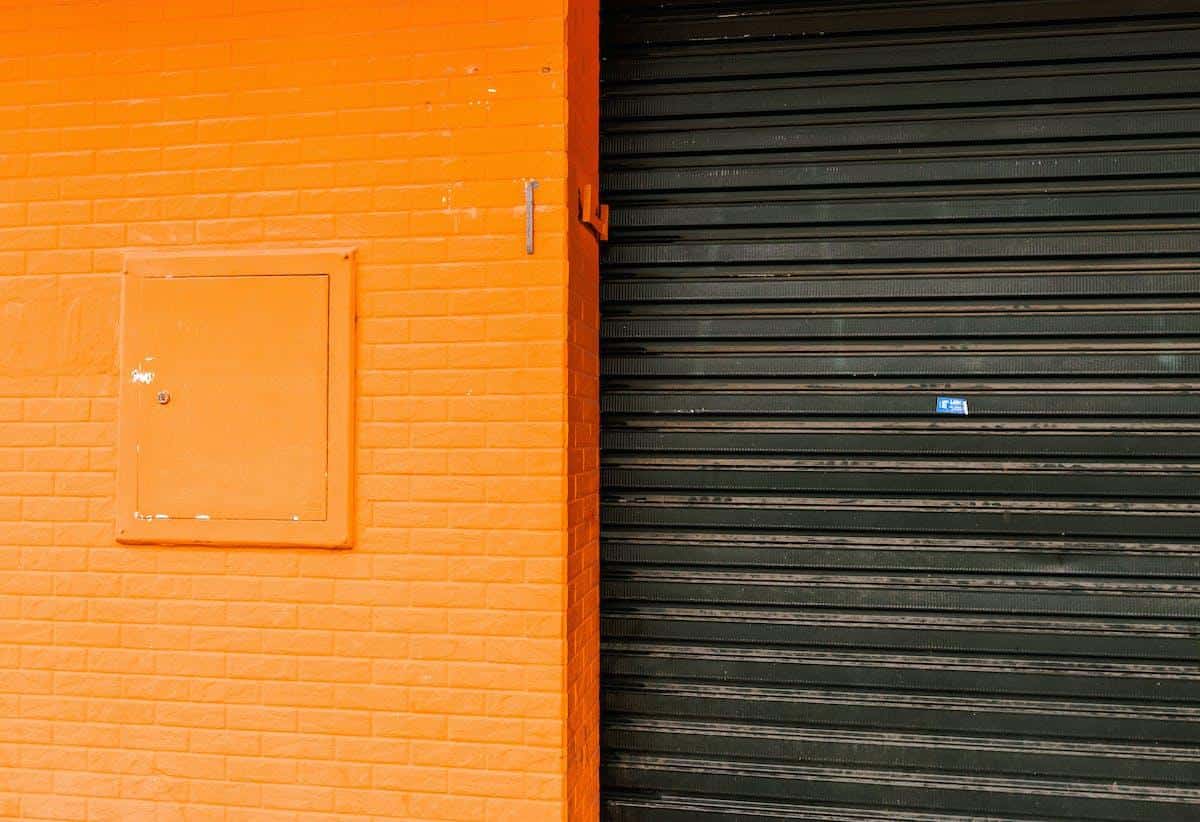In the correctional institution Orange County CA, an unusual phenomenon is occurring that requires our attention. It’s easy to overlook the relevance of prisons in our daily lives, considering them merely as a containment for individuals who have broken the law. Yet, these institutions have a much broader societal role to play-one that extends beyond mere detention.
Reform initiatives within correctional institutions serve as powerful opportunities to transform and uplift lives. Within Orange County, California, there’s a particular focus on ensuring that these resources aren’t overlooked or underutilized.
Rather than treating prisons as places of punishment alone, they are progressively recognizing the need for correctional centers to act as catalysts of change. These facilities hold tremendous potential to improve society by rehabilitating offenders and providing them with skills and knowledge essential for their reintegration into society upon release.
At Operation REFORM-we aim to shine a light on such transformative efforts. We believe in viewing people behind bars not simply as prisoners but human beings capable of growth, transformation, and contribution to society despite their past mistakes. This article will guide you on a unique journey towards understanding how the vision of transformation is being implemented in the landscapes of Orange County’s correctional system.
The Reality of Incarceration
The experience of incarceration is rather complex and layered. When considering any correctional institution, its purpose is multifaceted – keeping the society safe by removing law offenders, punishing them for their actions, and rehabilitating them for their reentry into society. In Orange County, California inmates often face a myriad of challenges that may sometimes hinder this reintegration process.
A significant challenge falls in the domain of mental health. It’s reported that approximately 15% inmates at Orange County Correctional institutions suffer from severe mental illnesses such as bipolar disorder and schizophrenia. Living in jail tends to exacerbate these conditions due to factors such as overcrowding, violence, lack of privacy etc. leading to an elevated rate of suicide among inmates.
Besides mental health issues, there also exist challenges pertaining to substance abuse and addiction. Data collected revealed that around 85% of the prison population struggles with substance use disorders. Additionally, a lack of proper rehabilitation or treatment programs further escalates these problems.
These issues aren’t individualized; they also impose consequences on society at large. The cost burden associated with running correctional facilities is immensely high; it’s estimated to average at around $47,102 per inmate per year in California alone. Today’s correctional system not only grapples with hefty financial implications but also societal ones – including the difficulty past prisoners face when re-entering the community; stigmatization; job scarcity etc. all contributing towards high rates of recidivism.
| Problem Area | Percentage(%)/Cost |
|---|---|
| Mental Health Issues among Inmates | 15% |
| Addiction Issues among Inmates | 85% |
| Cost per Inmate per Year | $47,102 |
By understanding and exploring the depth of the problem at hand, it becomes evident that comprehensive solutions are required. This leads to the potential for transformation.
The Vision
At the correctional institution in Orange County, CA, the word ‘transformation’ now extends beyond armed security and incarceration. It focuses on transformation strategies that are designed to reduce recidivism and create a safer community. Central to this new vision is the implementation of an array of educational, vocational, and treatment programs tailored towards rehabilitating inmates and reintegrating them into society in a more meaningful way.
A significant component of this vision involves addressing the root causes leading to criminal behavior such as addiction, mental health issues, lack of education or employable skills. Therefore, much emphasis is placed on addiction recovery programs and mental health services inside the institute. These initiatives are expected to help break cycles of dependency and minimize instances of reoffending amongst parolees post-release.
- The provision of therapeutic drug programs disseminates tools to help inmates understand their addiction while learning healthier coping mechanisms.
- Mental health services also incorporate individual counseling alongside group-based therapy sessions aiming to resolve underlying psychological concerns.
The Correctional Institution Orange County CA also acknowledges that having tangible skills handy will significantly enhance each inmate’s prospects once they leave prison. Hence, a myriad of vocational training opportunities are integrated within its reformative approach:
- Carpentry
- Auto repair
- Horticulture
- Culinary arts
- Computer programming
These programs not only equip individuals with readily employable skills but also imbue a sense of self-worth and purpose during their time inside – elements found crucial in maintaining long-term behavior change.
Perhaps most importantly, all these transformational efforts share one same goal: breaking the cycle of crime by inspiring hope for a better future amongst inmates at each step along their path toward rehabilitation. The rehabilitation strategy adopted by Orange County’s correctional institution reflects progressive thinking in correctional management – recognizing the potential of those within its walls, not just for what they once did but also for what they can yet contribute.

The Contributions
The Orange County correctional institution’s transformation initiatives would not have been realized without the meaningful contributions from multiple stakeholders. From government agencies to non-profit organizations, and driven volunteers, they all played pivotal roles in driving change and ensuring progress.
Government agencies form a significant part of this effort. The California Department of Corrections and Rehabilitation (CDCR) spearheads initiatives aimed at improving the lives of inmates within institutions in the state including Orange County. CDCR oversees all institutional procedures and has put into place rules and regulations enhancing the quality of life for prisoners. Additionally, it runs rehabilitation programs and resources made available to inmates to promote personal growth, recovery, and eventual reintegration back into society.
Non-profit organizations also play a tremendous role in bolstering transformational efforts. Notable local organizations include Friends Outside in Los Angeles County which provides resources like job placement services upon release, parenting education while incarcerated, and family support services for loved ones left behind.
- Friends Outside – provides job placement services after release
- Parenting Education Program – educates inmates on effective parenting tactics
- Family Support Program – assists families affected by incarceration with emotional support
Also noteworthy are the countless volunteers who give their time and expertise to help prisoners navigate their journey towards reformation. Ranging from teachers providing educational programs, therapists giving counseling sessions, or professionals teaching essential life skills such as budgeting or even resume writing – these individuals contribute significantly to uplifting lives within correctional facilities.
Transformative Programs
Over the years, Correctional Institution Orange County CA has significantly revamped its programs to focus on transformation and rehabilitation. Recognizing the need for reintegration into society, the institution implements diversified programming designed to provide positive impacts on prisoner’s lives both during and post-incarceration. Programs not only focus on correctional aspects but also educational, vocational, mental health and socio-behavioral facets crucial for sustainable rehabilitation.
One of the landmark initiatives employed is educational programs tailored specifically to inmate needs. In partnership with adult education institutions in Orange County, incarcerated individuals have access to basic academic skill development, GED preparation courses, vocational training and even college level programs. The preventive impact of these educational pursuits cannot be overstated as they are structured to alleviate systemic underlying issues such as poverty, substance abuse and limited career opportunities which largely contribute to criminal behavior patterns.
Another quilt in their patchwork of transformative tools is the Substance Abuse Treatment program addressing inmates battling addiction. Treating drug and alcohol dependencies within a structured environment breaks detrimental habits whilst consistently providing supportive counseling services fostering healthy coping mechanisms. Moreover, mental health support involves trauma-informed care recognizing the prevalence high-risk risky backgrounds among prison populations. Additionally, anger management workshops reinforce methods towards effective emotional regulation constructing a platform for successful societal reinstatement.
In moving toward an inclusive rehabilitative approach engrained with respect for diversity and unique challenges faced by different inmate groups; Women’s Services Program was implemented dedicated exclusively for female inmates focused on holistic well-being encompassing childcare planning; legal assistance; self-esteem workshops and relational life skills classes. Meanwhile cultural sensitivity training encourages recognition and appreciation of cultural differences promoting harmonious relations within the facility while preparing residents for an ever-diversifying real world outside.
Each program strikes a careful balance between rigorous discipline expected from penitentiary institutes while sculpting an environment conducive towards growth that transcends boundaries erected by past choices or circumstances. It is through these transformative tools that Correctional Institution Orange County CA is changing the narrative from punitive to rehabilitative, thereby creating a ripple effect that benefits not just inmates but society at large.
Success Stories
The transformative programs at the Correctional Institution in Orange County, CA have indeed changed many lives. Notable examples include that of John Doe, a former inmate at this institution. Previously known for his frequent run-ins with the law and a lifestyle marred by drug abuse and violence.
Today, after completing his term and participating in the institution’s rehabilitation programs, he has turned his life around convincingly. He now advocates for prison reform and works closely with non-profit organizations to keep vulnerable youth off streets and away from drugs.
One other shining example is Jane Smith, an ex-inmate who leveraged her time at the Orange County correctional institution to learn coding through one of their tech-oriented education programs. Despite her criminal past marred by thefts due to extreme poverty, she’s managed to secure employment post-release as a web designer at a prestigious tech company. Her transformation underscores the value vocational training can have in helping inmates forge new career paths upon release.
Yet another success is James Johnson, imprisoned for minor thefts but perpetually stuck in the revolving door of crime until he found hope inside the Orange County correctional institution’s walls. Through various literacy programs offered there, he improved his reading skills drastically while also discovering his passion for literature during his tenure.

Upon release, not only did he steer clear from criminal activities, but he also continued pursuing his interest in literature by studying English Literature further at a community college.
These center-stage transformations are merely three in a sea of similar success stories stemming from the tremendous work done inside Correctional Institution Orange County CA. These successful rehabilitations prove that with appropriate interventions and support systems intact within prisons, positive transformations can indeed be fruitful association outcomes.
| Inmate | Rehab Program | Outcome Post Release |
|---|---|---|
| John Doe | Drug Rehab and Counselling | Prison reform advocate, working with non-profits. |
| Jane Smith | Vocational Tech Training | Employed as a Web Designer in a tech company. |
| James Johnson | Literacy Program | Pursuing English Literature at a community college. |
Future Goals
The Continuation of Existing Programs
One of the primary future goals for Correctional Institution Orange County CA is to continue and expand the existing transformative programs. These initiatives have already proven their effectiveness in rehabilitating inmates and facilitating their re-entry into society, so focusing more resources and effort on them would certainly be beneficial.
For instance, efforts will be focused towards enhancing vocational trainings, educational courses, mental health services and drug rehabilitation programs. All these enable inmates to improve their skills, enrich their knowledge, manage their mental health issues and overcome addiction problems respectively.
Fostering Partnerships for Support
Another key objective is to forge stronger partnerships with government agencies, non-profit organizations and community volunteers. Collaborative efforts are crucial in driving change within such environments. Government agencies can provide much-needed funding; non-profit organizations can offer valuable training programs; while volunteers can bring a human touch to a typically harsh environment. Concrete steps are being taken to engage more stakeholders from these areas in order to sustainably run the transformation programs.
Innovations in Rehabilitation Efforts
Correctional Institution Orange County CA is also aiming for innovation as they look ahead into the future. New programs that use technology-based solutions like virtual reality or simulated work environments are currently under consideration.
Adopting such innovative tools may prove particularly useful in better equipping the inmates with necessary skills set deemed important by modern employers upon their release. Likewise, data-driven methods will be implemented to actively monitor program efficiency and inmate progress, allowing for timely modifications if required.
These forward-looking goals aim to uphold the institution’s mission of uplifting lives by creating an effective path for correctional inmates’ triumphant return back to society. As ambitious as these sound, they certainly carry a noble cause-providing previously-incarcerated individuals second chances at life while concurrently contributing positively toward societal safety and stability by reducing recidivism rates. Hence, the institution is enthusiastic and committed about carrying these out in the forthcoming future.
Summing Up
The application of rehabilitation strategies in correctional facilities such as the Correctional Institution Orange County CA plays a significant role not only in providing inmates with the necessary tools for meaningful societal reintegration but also mitigates recidivism rates. By focusing on education, vocational training, mental health services, and substance abuse programs, these institutions attempt to restore human dignity while addressing underlying issues contributing to criminal behavior.
The Transformative Power of Education
Prisoner education serves as one of the pillars in successful rehabilitation programs. In addition to decreasing recidivism rates by 43%, according to studies conducted by Rand Corporation, it also significantly boosts employment opportunities post-release. Programs that prioritize academic growth expose incarcerated individuals to new perspectives and critical thinking skills that can foster an environment for personal growth, ultimately leading them towards a path different from their past life.
Vocational Training & Mental Health Services
Providing inmates with practical skills through vocational training facilitates smoother transition into society following release. Meanwhile, addressing mental health issues and conditional illnesses prevalent among prisoner populations with adequate mental health services is equally vital for ensuring their well-being and capacity to achieve stability in society after their term.
In combination with effective substance abuse programs that confront the realities of addiction-a common catalyst leading many behind bars-these initiatives undertake a holistic strategy directed towards comprehensive reformation.
Reduction of Recidivism Through Rehabilitation
An effective rehabilitation program is one that reduces recidivism rates – the likelihood of former inmates re-offending after being released. Rehabilitative approaches typically combat this scenario by helping inmates resolve personal issues which may have led them down a criminal path initially and equip them with skills they need to sustain a law-abiding civilian life.

To sum up, rehabilitative efforts mark an essential function within inmate-serving correctional institutions like Correctional Institution Orange County CA. These transformative programs allow these facilities to function not just as punitive establishments but rather as restorative entities upholding the belief in human redemption and change. The public can support such initiatives by gaining a better understanding of their indispensability towards societal enhancement and pushing for policies that further reinforce the importance of rehabilitation over retribution.
FAQs About Correctional Institution Orange County CA
In highlighting the frequently asked questions about Correctional Institution Orange County CA, it’s important to refine the public understanding of these critical reformative efforts. This section hopes to demystify misconceptions while boosting awareness and encouragement for continual societal support.
One common question is regarding the success rate of these transformational programs. The reality is that success cannot be universally defined as every person’s journey through rehabilitation is unique and multi-faceted. However, we highlight individual testimonials and track broad patterns of reintegration to support our claim that these programs undeniably produce positive outcomes – lower recidivism rates, an improved transition into society, employment successes and personal growth experiences reported by inmates.
Another prevalent enquiry pertains to how the public can get involved in supporting these initiatives. There are myriad ways in which people can contribute and make a difference. Volunteering time or resources, donating towards educational materials or vocational training tools, advocating for fair policies that support such transformation initiatives; all are significant forms of support that help continue this mission.
Ultimately, it becomes clear through these FAQs that Correctional Institution Orange County CA not only serves as a form of punishment but seeks more importantly, to rehabilitate, uplift lives and integrate individuals back into society successfully – an effort made possible only with wider acknowledgment and ongoing backing from the community at large.
So let us all become stakeholders in this meaningful journey towards transformation; because when one life improves, so does our collective social fabric – enhancing prospects for sustained peace and progress within Orange County and beyond.
Frequently Asked Questions
What Is Orange County Corrections?
Orange County Corrections is a division of the Orange County Government, based in Florida, that manages and operates facilities for detaining individuals who are awaiting trial or serving their sentences after they have been convicted. Its purpose is to ensure public safety by providing a secure, humane environment for inmates where positive change can be emphasized through rehabilitative programs.
How Do I Find an Inmate in Orange County California?
In order to find an inmate in Orange County, California, you would need to use the online Inmate Locator provided on the Orange County Sheriff’s Department website.
Upon entering either the full name, booking number or permanent number associated with the individual you are looking for, you can find detailed information about current inmates such as their location, charges and bail amount.
What Is the Name of the Jail in Orange County?
The jail in Orange County is called The Theo Lacy Facility. It is one of the largest jail facilities run by the Orange County Sheriff’s Department in California and it houses male inmates primarily. The facility accommodates both pre-sentenced inmates awaiting trial and sentenced individuals serving shorter terms.
How to Send Money to Inmate in Orange County Jail California?
Sending money to an inmate in Orange County Jail in California can be done through various means designed to streamline contributions towards commissary accounts or phone services. One common method involves using the Kiosk system available at each facility to make automated cash deposits or embarking on online transfers via platforms like Access Corrections website.
However, identification details of both sender and recipient are required before transactions are permitted.
Why Is Jail Called Corrections?
Jails are often called ‘corrections’ because their main role extends beyond just keeping people locked up; they also provide rehabilitation programs that help offenders correct their behavior and steer clear of crime once they’re released back into society. Hence, these institutions serve as correctional facilities rather than mere detention centers.
What Does a Correctional Officer Do in California?
A correctional officer in California basically maintains security within prison facilities by overseeing incarcerated individuals and ensuring adherence to established rules and regulations put forth by a regulatory body like the Department of Correctional Services (DCS). These officers are also responsible for monitoring inmate behavior, preventing disturbances or violence, and administering rehabilitation programs aimed at facilitating reintegration into society.
What Purpose Is Served by the Corrections System?
The primary purpose served by the Corrections System is twofold: punishment and deterrence. From a societal perspective, the system functions to punish individuals who have committed crimes and to deter potential offenders from breaking the law. Beyond that, it is designed to rehabilitate convicts and proportionally sanction criminal behavior according to its severity with the aim of reducing recidivism rates.
Which States Are the Top Three in Corrections?
In terms of expenditure, staffing numbers, and inmate population, the top three states in corrections are California, Texas, and New York. These states have large operating budgets for their correctional systems due to their high populations resulting in a larger number of incarcerated individuals which requires sizable staff complements to effectively manage these facilities.
